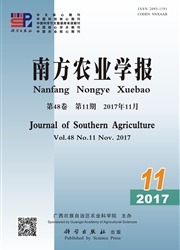

 中文摘要:
中文摘要:
【目的】丰富等钳蠊螨的形态学和基础生物学资料,为开展等钳蠊螨的生物防治利用研究奠定基础。【方法】利用解剖镜、电子显微镜观察不同龄期等钳蠊螨的外部形态特征和内部解剖结构,并进行比较和描述。【结果】描述并拍摄了等钳蠊螨不同龄期的外部形态,描述并绘制了等钳蠊螨的表皮结构和内部解剖结构。幼螨有足3对,若螨和成螨有足4对;体壁可分为粘质层、溢质层、表皮质层、上表皮、孔道、外表皮、内表皮、斯氏层、真皮等结构;躯体内部有极复杂的器官系统浸没在成分模糊的无色血浆中,主要有消化、排泄、呼吸、神经、循环及生殖等各系统。【结论】等钳蠊螨的生长期不同,其形态有明显的差异。
 英文摘要:
英文摘要:
Objective The information concerning morphology and basic biology of B. dentriticus was intended to enrich to provide references for biological prevention and treatment of B. dentriticus. Method The morphological characteristics and internal anatomical structures of B. dentriticus at different ages were described using light microscope and the scanning electron microscope. ResultThe cuticular layer and morphological characteristics of B. Dentriticus at different stage were filmed and described. B. Dentriticus larva had three pairs of legs, while protonymph and adult of B. Dentriticus had four. B. Dentriticus had slime layer cement layer, cuticular layer, epicutide, pore canal, exocuticle, endocuticle, straub layer and corium. Vastly complex organ systems (digestion, excretion, breath, nerve, cycle, reproduction) were submerged in colorless blood. Conclusion Morphological characteristics were markedly different at different growth stage, thus external traits and internal anatomical structures of B. Dentriticus, should be identified for precise results so as to provide references for application research of biological control and treatment.
 同期刊论文项目
同期刊论文项目
 同项目期刊论文
同项目期刊论文
 期刊信息
期刊信息
